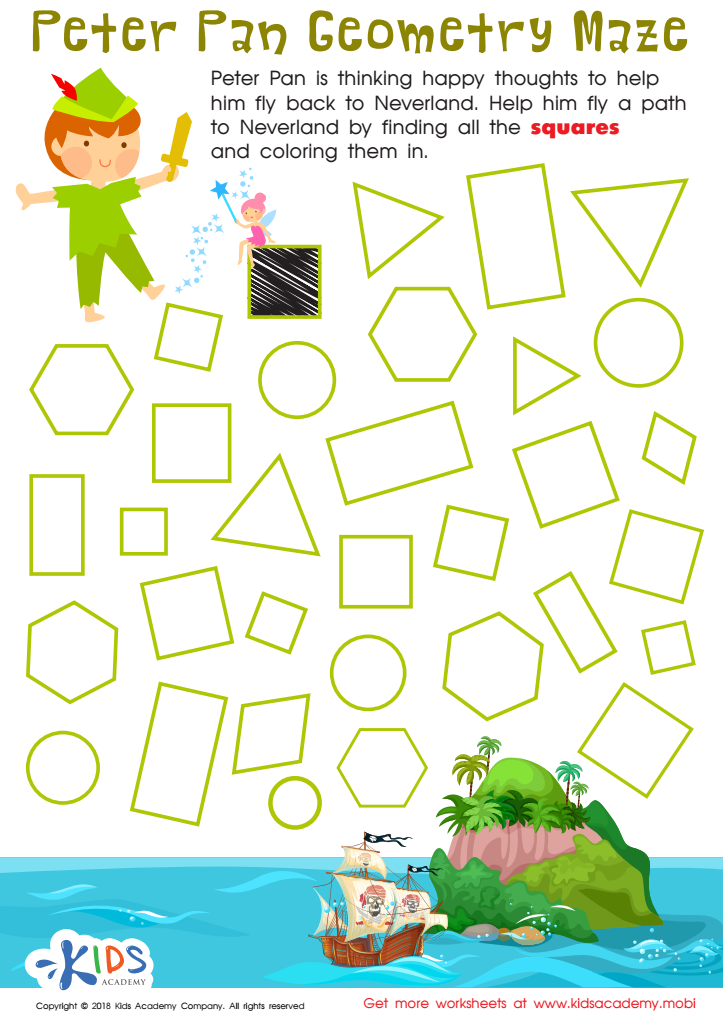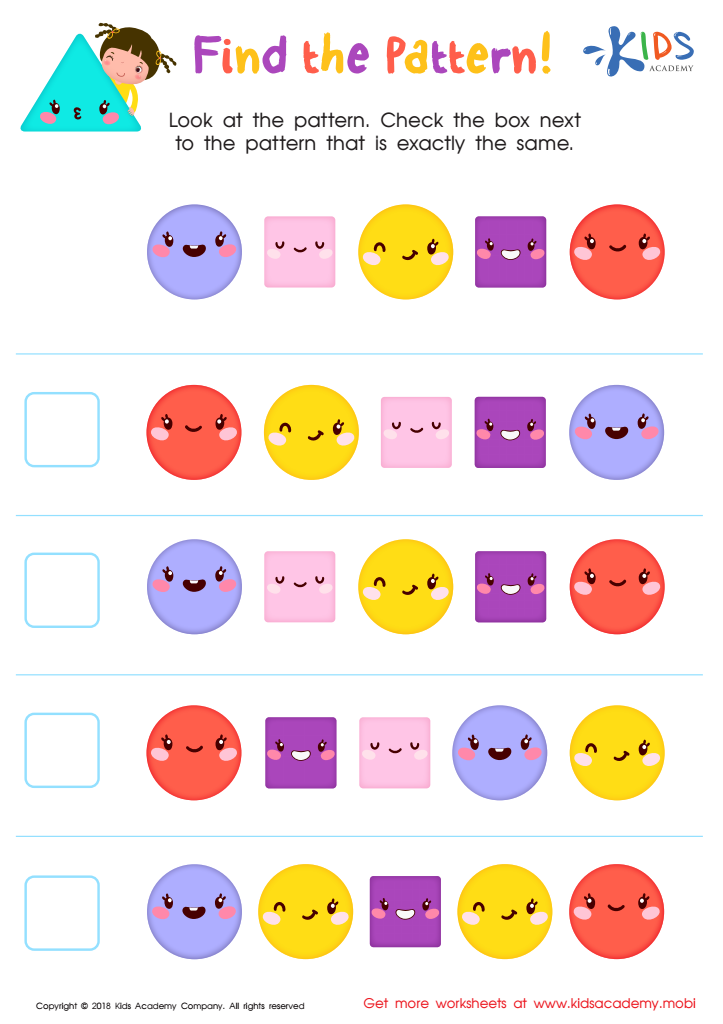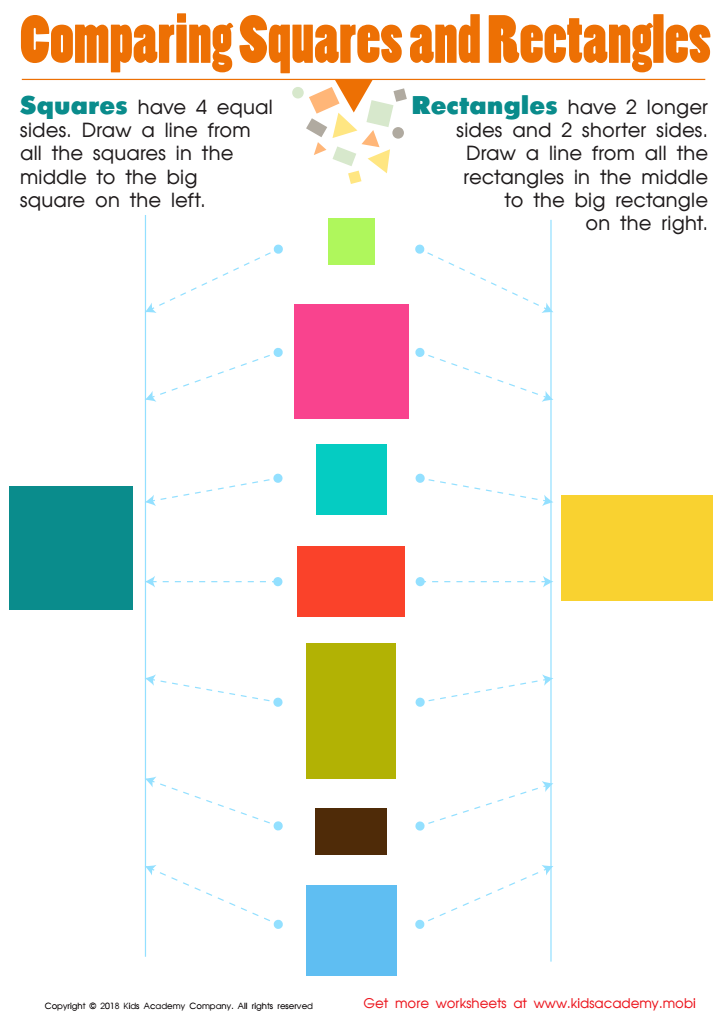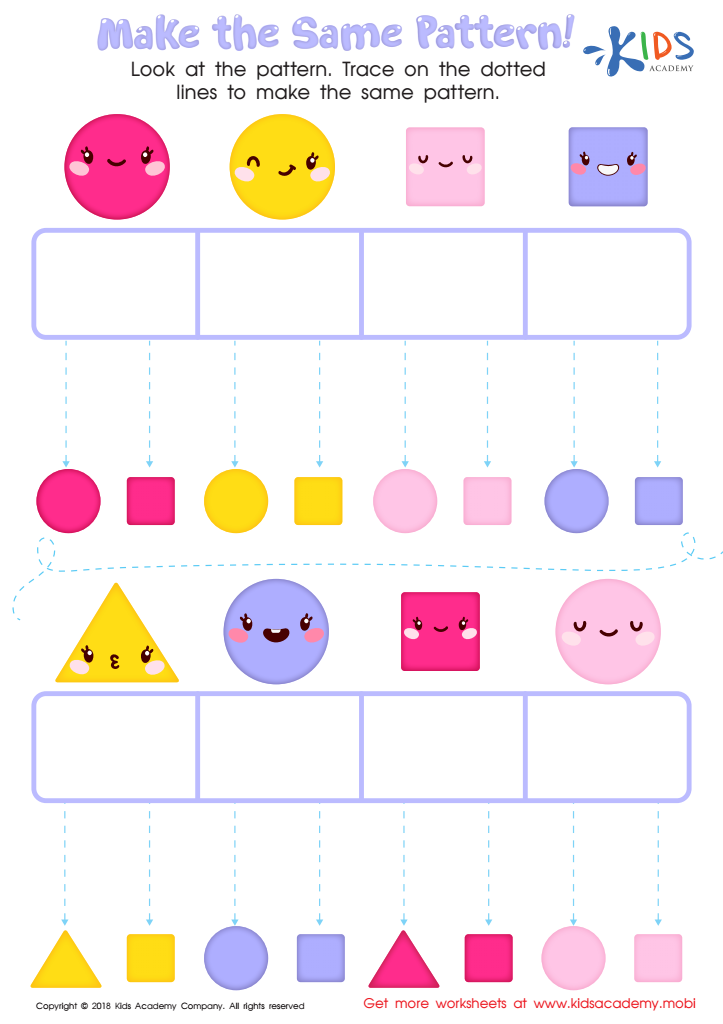Critical Thinking Normal Geometry Worksheets for Ages 5-9
5 filtered results
-
From - To
Unlock your child's potential with our Critical Thinking Normal Geometry Worksheets tailored for ages 5-9. These engaging and expertly designed worksheets aim to boost young learners' problem-solving skills and develop their analytical abilities. They cover essential geometric concepts, presented in a fun and interactive manner. Each worksheet encourages kids to think critically, improve their spatial reasoning, and deepen their understanding of shapes, symmetry, patterns, and more. Ideal for both classroom and home use, our resources are perfect for educators and parents looking to foster a love for learning and sharpen mathematical thinking in their students and children.


Peter Pan Worksheet


Find the Pattern Worksheet


Comparing Squares Rectangles Worksheet


Make the Same Pattern Worksheet


Using Squares to Make Rectangles Worksheet
Parents and teachers should care about cultivating critical thinking through normal geometry for children aged 5-9 because it lays the foundational skills necessary for advanced problem-solving and logical reasoning. Engaging young minds in geometrical concepts helps children visualize and understand spatial relationships, which are crucial for navigating and interpreting the world around them. By working with shapes, patterns, and basic geometrical concepts, kids can sharpen their ability to observe, analyze, and infer — core components of critical thinking.
Geometry at this early age enhances children's cognitive development by promoting analytical skills such as classification, sequencing, and logic. These skills are transferable to other academic areas, improving overall academic performance. Moreover, developing critical thinking through geometry encourages creativity as children learn to recognize patterns and solve problems in novel ways.
Additionally, early exposure to these concepts can also boost confidence in mathematics, reducing anxiety and apprehension toward the subject as they grow older. This foundation can lead to a stronger interest in STEM fields, as students are more likely to excel and feel competent in these areas.
By fostering critical thinking and understanding of geometry from a young age, we equip children with vital tools for lifelong learning, problem-solving, and decision-making, essential for their future academic and personal success.
 Assign to My Students
Assign to My Students
















